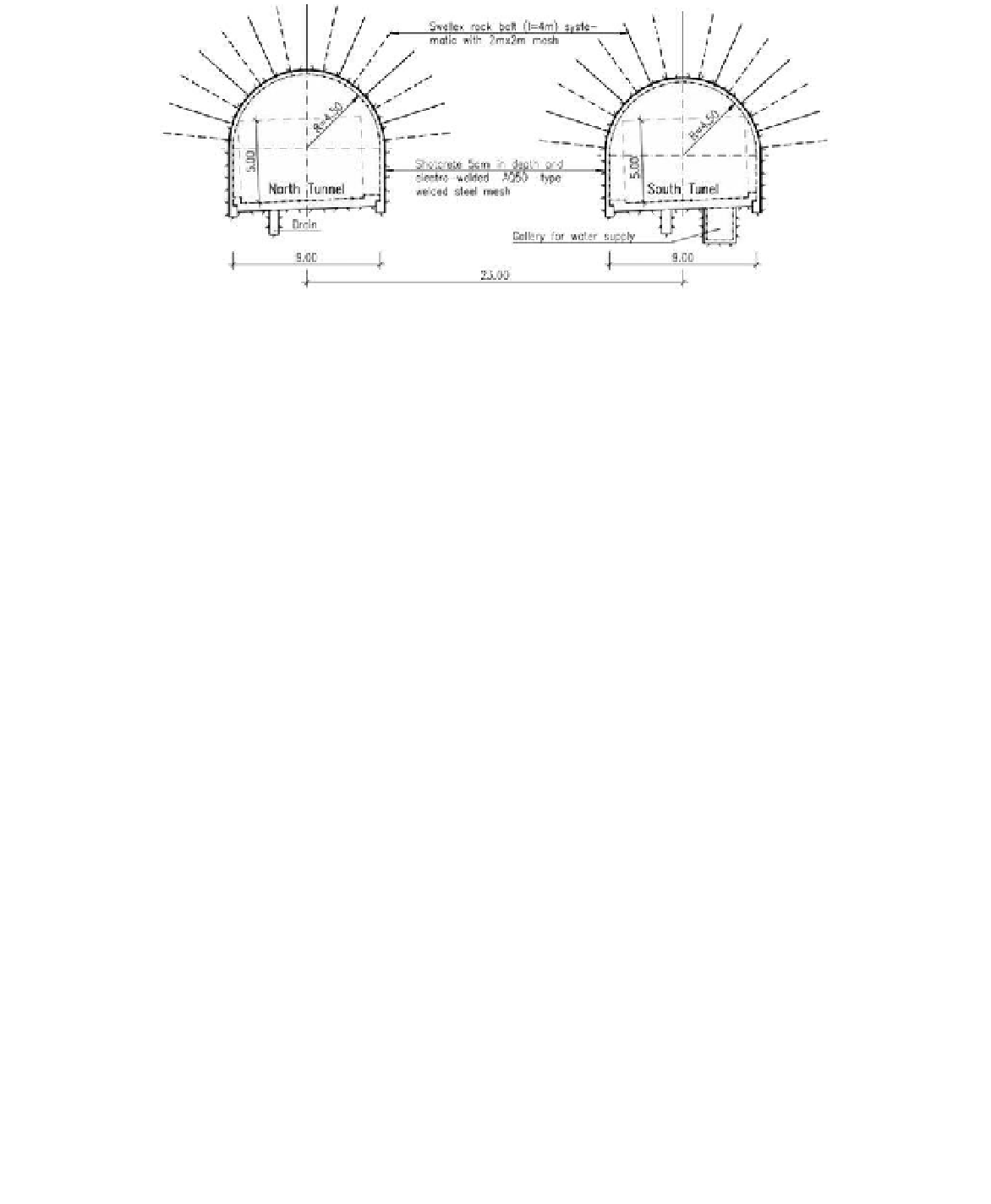Environmental Engineering Reference
In-Depth Information
Figure 2.
current cross-section of tunnels with indication of primary lining within geotechnical zone ZG2.
behaviour, allied with the limitations of empiri-
cal methods, results that experience takes on an
essential role, during both the design and construc-
tion phases.
4
PRiMaRY & seconDaRY lininGs
The substantial lateral variation in the type and
characteristics of the volcanic formations both
along the length of the tunnels and their trans-
verse cross-section, prevented precise zoning of
the respective bedrock or the corresponding zones
for the application of each type of support to be
determined to a sufficient degree during the project
phase.
hence, based on the lithological, structural
and mechanical characteristics of the forma-
tions crossed by the tunnels, materialised in their
respective longitudinal and transverse geological-
geotechnical profiles, geotechnical zoning of the
bedrock was carried out comprising four zones,
from ZG1 to ZG4, including one or several types
of lithology which in average terms display either
good, reasonable, poor or very poor behaviour.
as an example, in general, one refers to the geo-
technical zone ZG2 as comprised of resistant rocks,
faulted basalts and consolidated breccia, with shal-
low layers of disaggregated breccia or tuffs.
in general, it behaves as a formation of reason-
able quality which, due to its degree of faulting, as
a primary lining in the current tunnels, implied a
systematic application on the vault of 4 m length
swellex rock bolts spaced at 2 m apart in quin-
cunx, an aQ50 type electro-welded steel mesh and
again in general, rock bolts were not used on
the walls. in sections with a wider span, such as
Figure 3. overall view of Western portal of Fazenda
Tunnel and access Road e.
classifications in tunnel design must be pondered
with considerable reservations, since the estima-
tion of the required parameters for these materials,
especially for breccia and pyroclastic tuffs, presents
a great number of difficulties.
on the other hand, the parameters used in
these classifications are seldom those which best
reflect the behaviour of the rock mass and, thus,
appropriate to characterize some specific volcanic
formations. it is also worth emphasising that the
situations which may occur are so varied that these
can hardly be entirely covered and described using
these classifications.
The very peculiar characteristics of volcanic
formations, which are reflected in the complexity
of the representative parameters that control their















